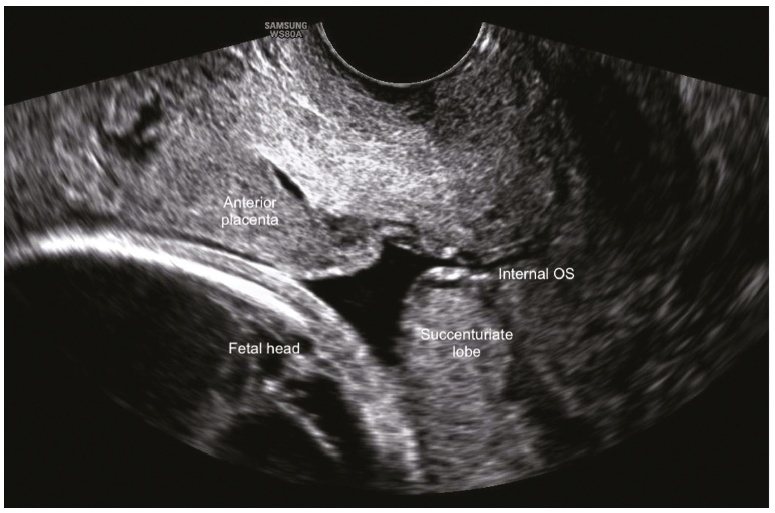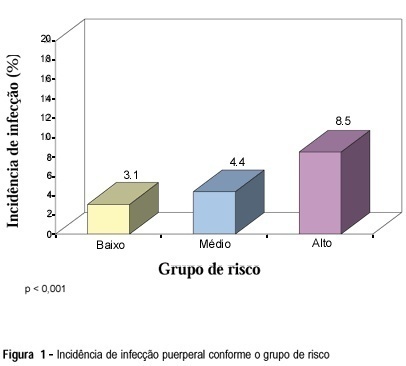Summary
Revista Brasileira de Ginecologia e Obstetrícia. 2021;43(7):507-512
To evaluate the factors associated with abortion complications following the implementation of the good-practice surveillance network Mujeres en Situación de Aborto (Women Undergoing Abortion, MUSA, in Spanish).
A cross-sectional study withwomen who underwent abortion due to any cause and in any age group at UNICAMP Women’s Hospital (part of MUSA network), Campinas, Brazil, between July 2017 and Agust 2019. The dependent variable was the presence of any abortion-related complications during hospitalization. The independent variables were clinical and sociodemographic data. The Chi-square test, the Mann-Whitney test, and multiple logistic regression were used for the statistical analysis.
Overall, 305 women were enrolled (mean±standard deviation [SD] for age: 29.79±7.54 years). The mean gestational age was 11.17 (±3.63) weeks. Accidental pregnancy occurred in 196 (64.5%) cases, 91 (29.8%) due to contraception failure. At least 1 complication was observed in 23 (7.54%) women, and 8 (34.8%) of them had more than 1. The most frequent complications were excessive bleeding and infection. The factors independently associated with a higher prevalence of complications were higher gestational ages (odds ratio [OR]: 1.22; 95% confidence interval [95%CI]: 1.09 to 1.37) and contraceptive failure (OR: 3.4; 95%CI: 1.32 to 8.71).
Higher gestational age and contraceptive failure were associated with a higher prevalence of complications. This information obtained through the surveillance network can be used to improve care, particularly in women more susceptible to unfavorable outcomes.
Summary
Revista Brasileira de Ginecologia e Obstetrícia. 2009;31(10):508-512
DOI 10.1590/S0100-72032009001000007
PURPOSE: to check epidemiological data from a breast diagnostic clinic. METHODS: mammographies from 35,041 patients were studied, within a period of 2 years and 7 months, from 2004 to 2006, 32,049 (91.5%) of them from screening, and 2,992 from symptomatic patients (8.5%). The calculated parameters were: detection rate of the screening patients, percentage of cancer among the symptomatic patients, rate of biopsy indication, percentage of minimal, in situ, and stage 0-1 carcinomas, recall rate, and predictive value of mammographies considered as abnormal and of biopsies' indications in screening patients. RESULTS: 228 diagnoses of breast cancer were made, 111 in screening patients (0.34% detection rate) and 117 in symptomatic patients (3.91% detection rate). The number of biopsies' recommendations among screening patients was 544 (1.7% of those patients). There were 28% of minimal carcinomas, 10% of in situ carcinomas and 93% of stage 0-1 carcinomas among the screening patients. Recall rate was 19%. Positivity of mammographies considered as abnormal (VPP1) was 1.65%. The rate of biopsies' positivity (VPP2) was 21.9%. CONCLUSIONS: this study brings important epidemiological data for the audit of mammographic screening, rare among us. Data have been analyzed as compared to what is recommended by the literature, the detection rate and the percentage of minimal and in situ carcinomas found being comparable to the established values, but with the VPP value lower than the ideal.
Summary
Revista Brasileira de Ginecologia e Obstetrícia. 2020;42(8):508-510

Summary
Revista Brasileira de Ginecologia e Obstetrícia. 2019;41(8):508-519
We sought to investigate whether women present adequate knowledge of the main pelvic floor disorders (PFDs) (urinary incontinence - UI, fecal incontinence - FI, and pelvic organ prolapse - POP).
sources A systematic review was performed in the MEDLINE, PEDro, CENTRAL, and Cochrane databases for publications from inception to April 2018. Selection of studies A total of 3,125 studies were reviewed. Meta-analysis was not possible due to the heterogeneity of primary outcomes and the diversity of instruments for measuring knowledge. The quality of the articles included in the analysis was evaluated with the Newcastle-Ottawa Scale (NOS) adapted for cross-sectional studies.
Two authors performed data extraction into a standardized spreadsheet.
Nineteen studies were included, comprising 11,512 women. About the methodological quality (NOS), most of the studies (n= 11) presented a total score of 6 out of 10. Validated questionnaires and designed pilot-tested forms were the most frequently used ways of assessing knowledge. Some studies were stratified by race, age, or group minorities. The most used questionnaire was the prolapse and incontinence knowledge questionnaire (PIKQ) (n= 5). Knowledge and/or awareness regarding PFD was low to moderate among the studies. Urinary incontinence was the most prevalent PFD investigated, and the most important risk factors associated with the lack of knowledge of the pelvic floor were: African-American ethnicity (n= 3), low educational level (n= 4), low access to information (n= 5) and socioeconomic status (n= 3).
Most women have a gap in the knowledge of pelvic floor muscle dysfunctions, do not understand their treatment options, and are not able to identify risk factors for these disorders.

Summary
Revista Brasileira de Ginecologia e Obstetrícia. 2014;36(11):509-513
DOI 10.1590/S0100-720320140005024
To evaluate the influence of maternal obesity on pregnancy, childbirth, and neonatal outcomes.
A cross-sectional study with 298 postpartum women. Information was obtained through interviews and access to patients' medical records. The patients were divided into three groups according to their pre-gestational body mass index: normal weight (18.5–24.9 kg/m2), overweight (25.0–29.9 kg/m2), and obese (≥30.0 kg/m2). Data are reported as adjusted odds ratios with 95% confidence interval (95%CI) following multinomial logistic regression analysis to account for confounding variables.
Compared to pregnant women with normal body mass index, overweight women had greater chances of having cesarean delivery, odds ratio (OR) of 2.2 and 95%CI 1.3–3.9, and obese women even more (OR=4.2; 95%CI 2.1–8.1). The chances of gestational diabetes increased in the Overweight (OR=2.5; 95%CI 1.1–5.6) and Obese groups (OR=11.1; 95%CI 5.0–24.6). The occurrence of hypertensive syndrome was also higher in overweight (OR=3.2; 95%CI 1.2–8.1) and obese pregnant women (OR=7.5; 95%CI 2.9–19.1). Major postpartum hemorrhage only showed greater values in the obese women group (OR=4.1; 95%CI 1.1–15.8). Regarding the newborns, the probability of a low Apgar score at first minute was higher in the Obese Group (OR=5.5; 95%CI 1.2–23.7) and chances of macrosomia were higher in the Overweight Group (OR=2.9; 95%CI 1.3–6.3). Data regarding neonatal hypoglycemia were not conclusive.
Excessive weight (overweight and obesity) during pregnancy increases the chance of maternal complications (gestational diabetes, hypertensive syndrome, and major postpartum hemorrhage) and neonatal outcomes (cesarean delivery, macrosomia, and low Apgar score).
Summary
Revista Brasileira de Ginecologia e Obstetrícia. 1998;20(9):509-515
DOI 10.1590/S0100-72031998000900004
Purpose: to evaluate the efficacy of four antibiotic regimens in puerperal infection prophylaxis. Patients and Methods: According to vaginal or abdominal delivery and risk the presence or not of factors for puerperal infection, the patients were allocated to groups of low, medium and high risk for its development. Between March 1994 and June 1997 2,263 patients were evaluated. Results: the incidence of puerperal infection was different in each group. It was 3.1% in the low risk group, where no antibiotic was given, and 8.5% in the high risk group where all patients received three doses of 1 g EV cefalotin at six-hour intervals. In the medium risk group, the incidence of puerperal infection was 5.3% for the patients who used three doses of 1 g EV cefoxitin; 5.1% for those who used three doses of 1 g EV cefalotin; 4.0% when a single cefoxitin dose was used and 3.4% when a single cefalotin dose was used. Conclusions: it is not necessary to use prophylactic antibiotic therapy in low risk patients and the first generation cephalosporins (cefalotin) are as efficacious as the second generation cephalosporins (cefoxitin) to prevent puerperal infection, independent of the applied dosage. Cefalotin seems to be effective in preventing puerperal infection in patients at high risk.

Summary
Revista Brasileira de Ginecologia e Obstetrícia. 2004;26(7):509-515
DOI 10.1590/S0100-72032004000700002
PURPOSE: to analyze vaginal contents using the fresh wet mount of a cytological exam in the first prenatal visit of women with or without genital complaints and correlate the conclusion with the results from the Pap smears. Microscopy during pregnancy should be valued and recognized as a method capable of providing immediate diagnosis in 90% of bacterial vaginosis, candidiasis and trichomoniasis cases. METHODS: a prospective study was performed in 216 pregnant women selected from the prenatal department of a public hospital, between October 30, 2001 and November 12, 2002. Two samples were collected from the posterior vaginal vault and deposited onto two separate microscope slides. To one slide, a droplet of 0.9% NaCl was applied and to the other, a droplet of 10% KOH. Both slides were covered with a coverslip for immediate microscopic evaluation. Tests were perfomed in one drop of the material to examine pH and whiff. The microscopic examination of the material was carried out at a 100X, 400X and exceptionally 1000X magnification. Pap smears were performed in all pregnant patients. The correlation between the results of the utilized cytological methods was perfomed by the kappa coefficient, which evaluates the concordance for quality variables. RESULTS: the findings of the normal vaginal microflora in the fresh wet mount were 7.8%, representing the most observed cytological aspect, and without correspondence with the 3.70% verified by the Pap smears. In the fresh wet mount, bacterial vaginosis was found in 30.9% and candidiasis in 7.9% of the cases. However, in the Pap smears no similar event occurred, the diagnosis being 0.7 and 24.3%, respectively. The absence of a diagnosis correlation of nonspecific bacterial vaginitis by direct microscopy (17.5%) and Pap smears (51.3%) is probably due to the undervalued diagnosis of bacterial vaginosis by the latter method. The diagnosis of trichomonas vaginalis observed in both cytological methods (3.70 and 2.78%) represents a low prevalence of these parasites in the course of pregnancy. The kappa coefficient between the two cytological procedures in the several microbiological findings showed low correlation of the diagnosis of bacterial vaginosis with nonspecific vaginitis, as well as the normal vaginal flora. CONCLUSIONS: although the Pap smear presents the best accuracy of the diagnosis of yeast without pseudomycelium, the fresh wet mount has shown to be a better appraiser of nonepithelial cells the vaginal smears. Because Pap smears allow a better evaluation of vaginal epithelial cells, they represent the most important tool to show the aggressions and reactions of the nucleus and cytoplasm.
Summary
Revista Brasileira de Ginecologia e Obstetrícia. 2005;27(9):509-514
DOI 10.1590/S0100-72032005000900002
PURPOSE: to evaluate the luteal function in adolescents with regular menstrual cycles. METHODS: this prospective cohort study included 55 adolescents, aged 14-19 years, with menarche at 12.2 years. Ovulation was identified by ultrasound, starting on the second or fifth day of the cycle. The corpus luteum vascularization and the resistence index of the ovarian vessels were measured by Doppler on the tenth postovulatory day. Progesterone was measured by chemoluminescence on days 6, 9 and 12 of the luteal phase. The endometrial biopsy was performed 8 to 10 days after ovulation. The results were analyzed using the SPSS software and were considered significant when p<0.05. RESULTS: on average ovulation was on day 17. Progesterone levels were 11.4, 10.9 and 3.9 ng/mL on days 6, 9, and 12 after ovulation, respectively; the progesterone mean during the whole luteal phase was 10.3 ng/ml. Luteal vascularization was scarce in 34.6%, mild in 23.6% and exuberant in 41.8%. The resistance index was 0.441. On the tenth day post-ovulation the endometrium was normal in 85.5% and out-of-phase in 14.5%. There was no correlation between the ovulation day and endometrial dating (p=0.294), levels of progesterone and endometrial dating (p=0.454), progesterone and corpus luteum vascularization (p=0.994), or resistance index (p=0.237). There also was no association between endometrium development and degree of vascularization (p=0.611). CONCLUSION: abnormal luteal function in adolescents with regular menstrual cycles was found in 14.5%. Degree of vascularization, resistance index, and serum progesterone were not related to endometrium development.